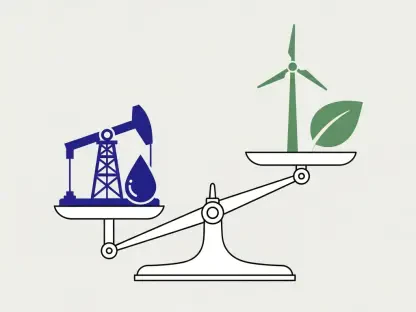In the landscape of global oil investments, Baker Hughes has released a sobering forecast regarding the upcoming years. The company anticipates a significant reduction in investments by oil producers due to a variety of economic pressures and market volatilities, which profoundly affect the industry. Tariffs are the primary catalyst in this predicted downturn, leading to a reduction in demand and consequently putting pressure on oil prices. This anticipated decline suggests a shift in the dynamics of oilfield investments, especially in regions such as North America, where market movements are particularly volatile. As a result, Baker Hughes has revised its previous forecast, now expecting a high single-digit decline in global upstream spending. This pessimistic outlook diverges from earlier predictions, underscoring the growing apprehension within the industry about future investments given the current economic climate.
Economic Pressures and Market Volatility
The current economic environment is fraught with uncertainties and potential risks, greatly influencing investment strategies in the oil sector. Baker Hughes, along with other leading players like Halliburton, keenly observes the implications of oil price volatility on oilfield activities. In particular, North America is witnessing extended delays in discretionary spending, primarily because of ongoing uncertainties and unpredictable market swings. These delays have reverberated into the second quarter, indicating prolonged caution among stakeholders. The risks attributed to oil price volatility are poised to significantly influence U.S. land activities throughout the latter half of the year, suggesting a landscape fraught with challenges. On a global scale, this potential downturn is driven by an oversupplied oil market, a backdrop of rising tariffs, economic instability in Mexico, and a noticeable reduction in activity within Saudi Arabia. Together, these factors create a complex and uncertain scenario for oil investments, demanding strategic considerations from all stakeholders involved.
The Impact of Tariffs on Investment Strategies
Tariffs have emerged as a formidable component shaping investment landscapes in the oil sector, with significant implications on costs and business strategies. The imposition of tariffs on imports from countries such as China, Germany, Britain, and Italy poses a direct challenge to companies like Baker Hughes, potentially inflating operational costs. Additionally, the moderate effects of steel and aluminum tariffs are expected to further impact expenses, prompting the company to reassess its cost management strategies. In response, Baker Hughes has undertaken measures like enhancing domestic sourcing and engaging in discussions with clients for potential cost recovery. These initiatives aim to mitigate the financial burden imposed by tariffs. Despite these proactive steps, the company projects that annual earnings may face a reduction of between $100 million to $200 million due to these tariffs. Thus, the global uncertainties underscore the need for adaptive strategies to navigate through these financial challenges imposed by international trade policies.
Opportunities in LNG Technology
Despite the challenges facing the oil sector, Baker Hughes has identified notable opportunities in the realm of LNG technology. A positive outlook is fueled by several favorable developments, such as the U.S. government’s removal of the LNG export permit moratorium. This important policy shift is poised to increase demand for LNG technologies and equipment, aligning with broader trends of growing gas consumption and rising energy demands for data centers. In particular, significant growth prospects are evident in the Gulf Coast region, where key clients are eyeing potential expansions extending beyond 2030. Baker Hughes anticipates a substantial inflow of orders for data center equipment over the next three years, a trend that not only signals optimism but also strategic opportunities for expansion. These prospects highlight the crucial role of LNG technologies as a counterbalance to the more challenging and fluctuating segments of the oil investment landscape, offering stability and growth potential.
Strategic Outlook and Future Considerations
The current economic climate is riddled with uncertainties and risks, heavily impacting investment strategies in the oil industry. Baker Hughes, along with industry leaders like Halliburton, closely monitors how oil price fluctuations affect oilfield operations. In North America, there’s been a notable delay in discretionary spending due to persistent uncertainties and market unpredictability. These fiscal hesitations have spilled into the second quarter, indicating stakeholder caution ahead. Oil price volatility risks are expected to heavily impact U.S. land operations in the year’s latter half, underscoring a challenging period. Globally, this potential downturn results from an oversaturated oil market, escalating tariffs, economic instability in Mexico, and reduced activities in Saudi Arabia. These elements together present a complex scenario for oil investments, necessitating strategic thought and planning from all involved parties to navigate these uncertain times.









